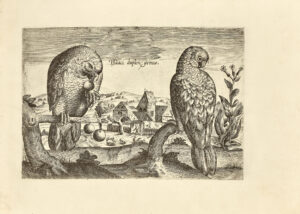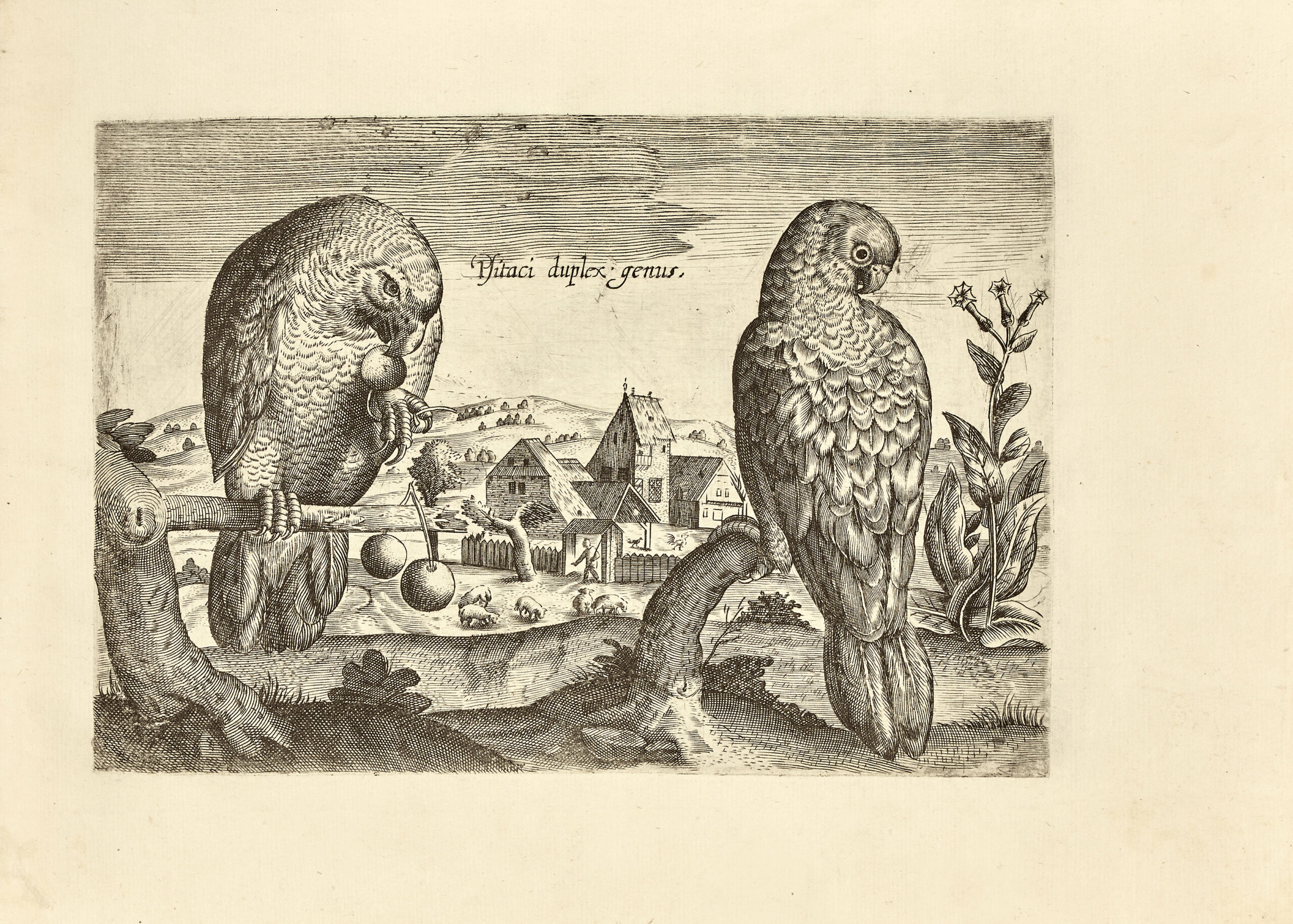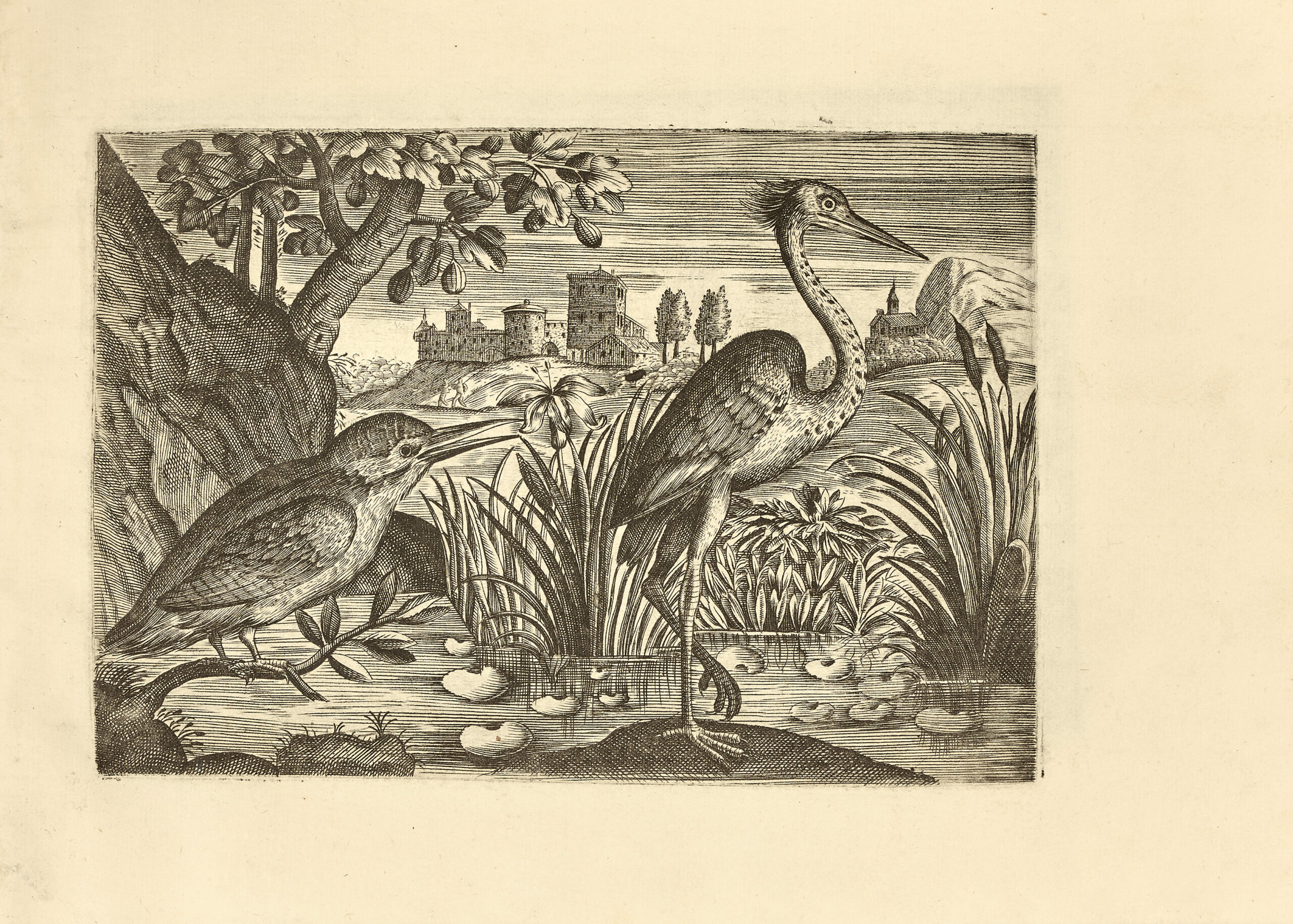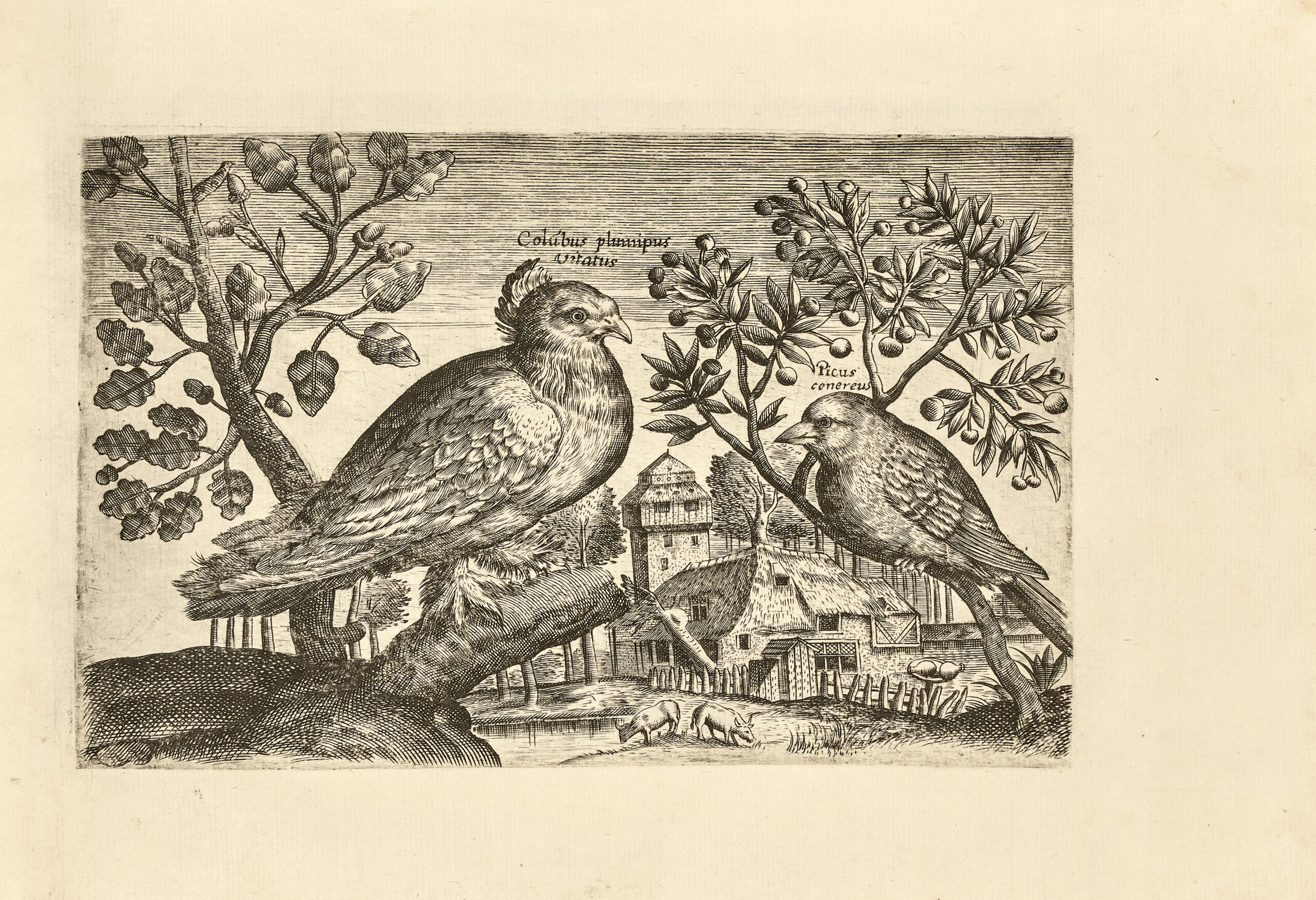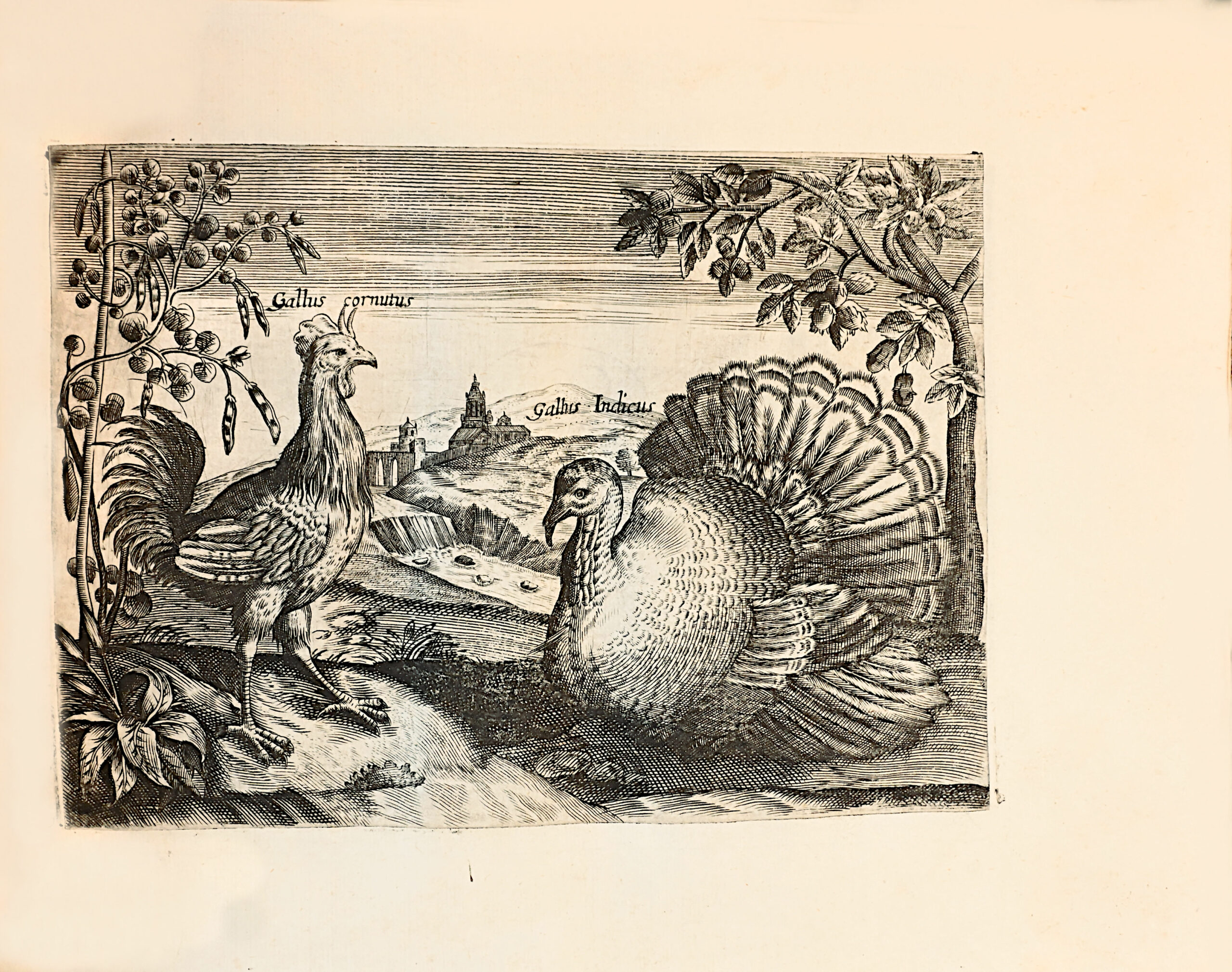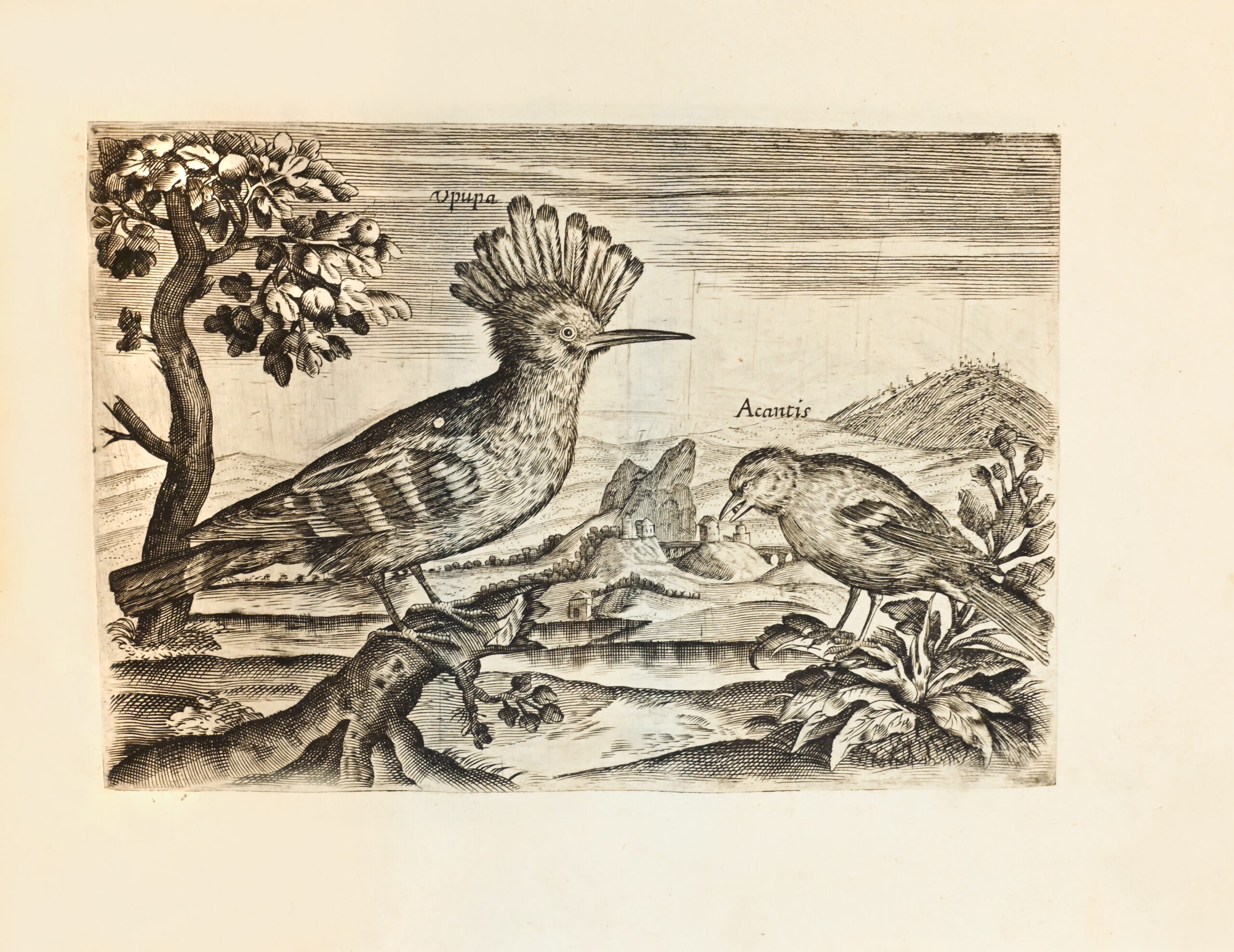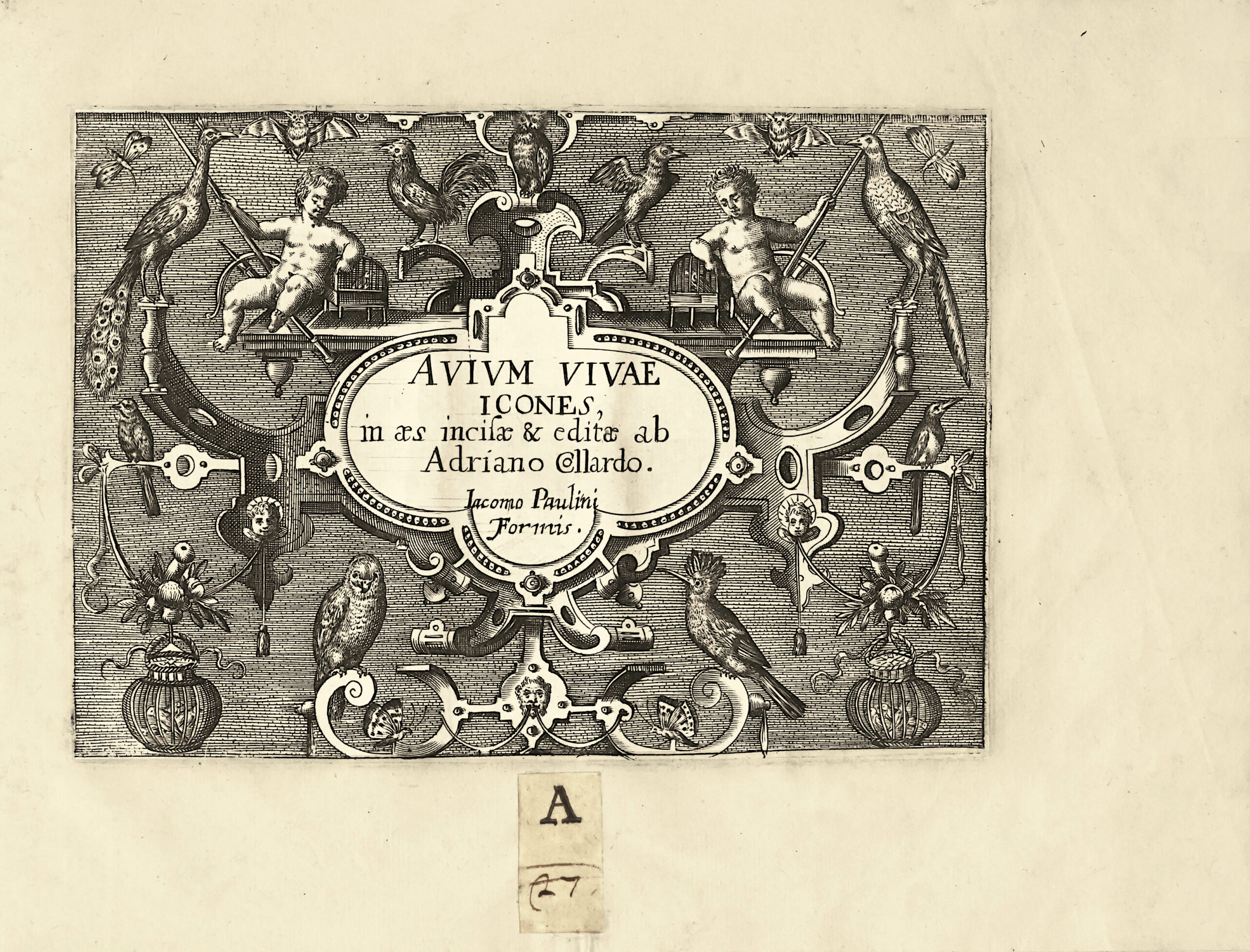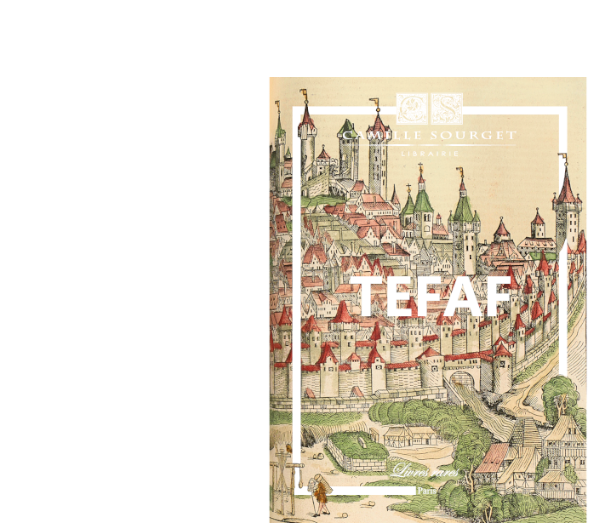[Venice, Iacomo Paulini, ca 1580-1600].
Oblong 4to, engraved title and 15plates. Mottled roan, flat spine. Antique binding.
191 x 260 mm.
Obviously the first printing of this famous series of ornithological engravings. Copenhagen/Anker 14; Ellis/Mengel 533 (later ed.); McGill/Wood (later ed.); Nissen, IVB 199; Ronsil 616. Collaert engraved these plates in Antwerp, but they were evidently sent to Italy for publication. "At the end of the sixteenth and beginning of the seventeenth centuries, small albums of flower and animal plates were published in the Netherlands for modest purses. One of the most remarkable is the little bird book in two volumes by the Flemish copper engraver Adriaan Collaert (Antwerp, ca. 1560-1618). Little is known about him personally: we do know that he was admitted to the Guilde St-Luc and that in 1586 he married the daughter of Philippe Galle, copper engraver and print publisher, in whose workshop he made his debut. Under the titles "Avium vivae icones" and "Avium iconum edition secundo" appêr two series of 16 bird engravings, executed by Collaert in 1580 and around 1600 respectively. In the first, êch bird is given a Latin name. Most of the figures depict native species, such as magpies, jays, starlings, sparrows, grêt tits, Europên waxwings and others. Also fêtured are selected species of domestic animals: roosters, pigeons, etc., as well as exotic birds: ostriches, crowned cranes, guinê fowl and parrots. The second series, numbered from 1 to 16 (including the title page), is not a reprint of the first, as the title would suggest, but a sequel. After a few native birds, which were alrêdy included in the first collection, the choice extends to rarer birds, both indigenous and exotic. In most cases, there are two subjects presented on a single plate, but the size ratio between one species and the other is not respected. On the other hand, most of the birds appêr to be drawn from life. Their attitude, for example that of the parrot handling cherries, is very natural. In contrast to his predecessors, Collaert presents his birds in a landscape setting, with an êsily recognizable plant or tree in the foreground on most plates. Without wishing to see him as a precursor of those who depicted the habitat, we can, in any case, support that his new way of presenting birds is the origin of the most bêutiful later ornithological illustrations. "Adriaan Collaert's bird plates are also of grêt scientific value. A. C. Oudemans sees in A. Collaert's Avis indica, the only known representation of Schlegel's Laguatia gigantê, which Dutch sailors had brought back from Mauritius around 1599 or 1600, and which had been exhibited in Count van Solms' garden on the Boitenhof in The Hague. In Voyages et aventures de François Leguat et de ses compagnons en deux îles désertes des Indes orientales (London, 1708, p. 171), we find a description of this woodcock, which Schlegel named Leguatia, because he believed that Leguat's engraving was the only image of this extinct species. We can therefore say that Collaert's plate is the only good representation of this extinct bird. Had Schlegel known about it, he might have named the Géans Collaersia" (Royal Library of Belgium exhibition catalogue “En toute sorte de plume", 1968). The editions of "Avium vivae icones" given by the royal library of Belgium are as follows:
See less information
- Avium vivae icones, in aes incisae et editae ab Adriano Collardo, 16 pl. including title, obl. 8°. Antverpiae, n.d. [ca. 1580 according to Engeilmpan), and not 17 lêves indicated by Nissen (199).
- Avium iconum editio secunda. Adrianus Collaert fecit et excudit. 16 pl. Antverpiae, n.d. obl. 4°.
- Avium vivae icones, in aes incisae et editae ab Adriano Collardo et Theodaro Galineo. 8° obl. 32 pl. n. loc. [Antverpiae], s.d. [1637].
- Avium vivae icones, Adriano Collardo inventore, excisae apus C. J. Visscher. Anno 1625. [Antverpiae]. According to Nissen 18 pl.
- Casey Wood also reports an Avium vivae icones, Anumtissima imitatio êrum atiae incisê et edige sunt... edited by G. B. Rossi, Piazza Navona, [Roma]. 16 plates (including frontispiece). Since Hollstein, who has so far compiled the most complete inventory of Collaert's work, does not mention it, it is of interest to include here a description of this Italian edition, based on the McGill University Library copy : « one of the artist’s êrliest and best album of bird life. Evidently first states of the plates and before all letters (except the systematic natures of the birds). A very clên, clêr copy. Very rare in this condition.
- Finally, Clauss Nissen mentions an edition containing 30 illustrations published by F. de Witt in Antwerp around 1640. »
